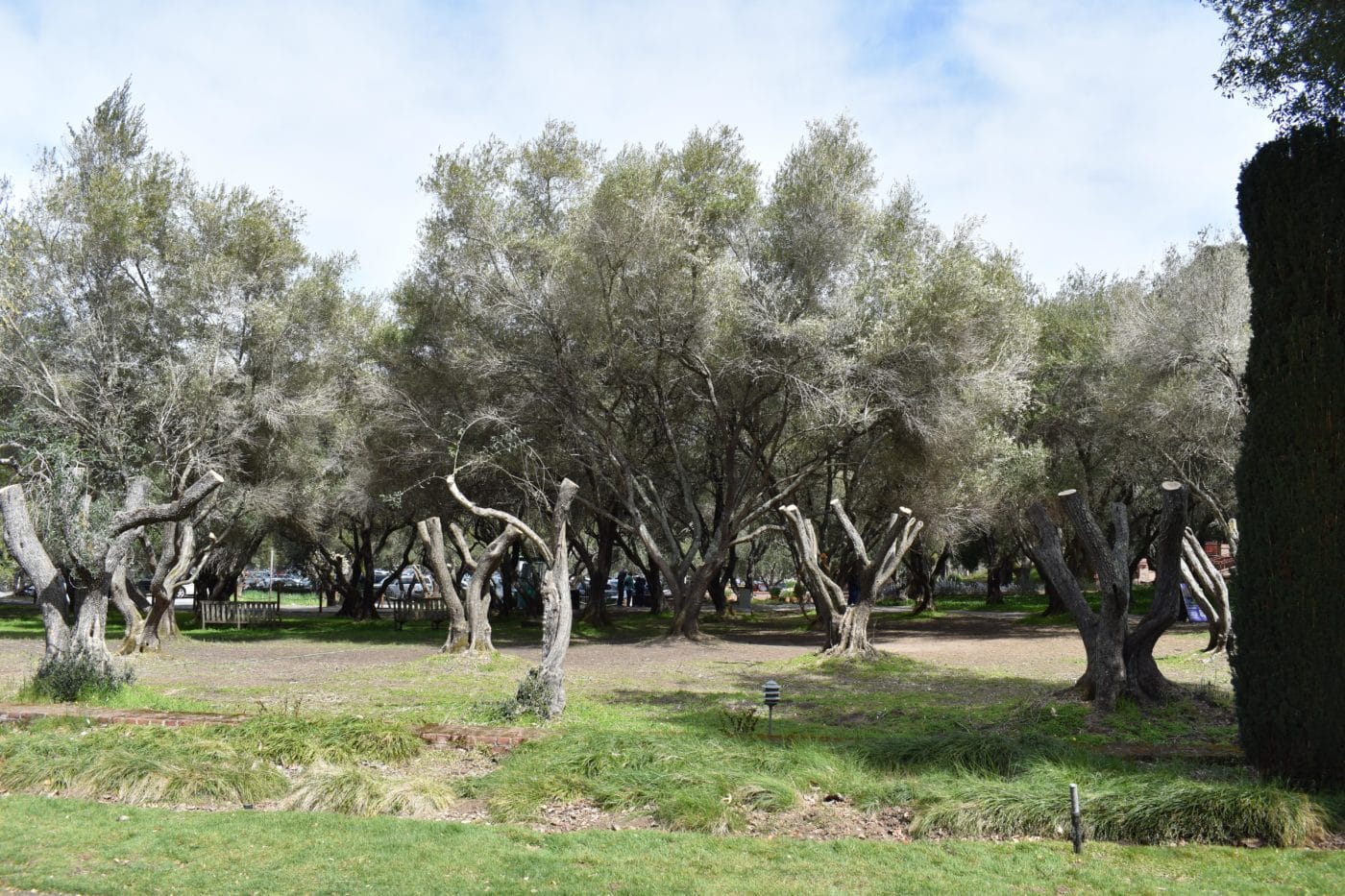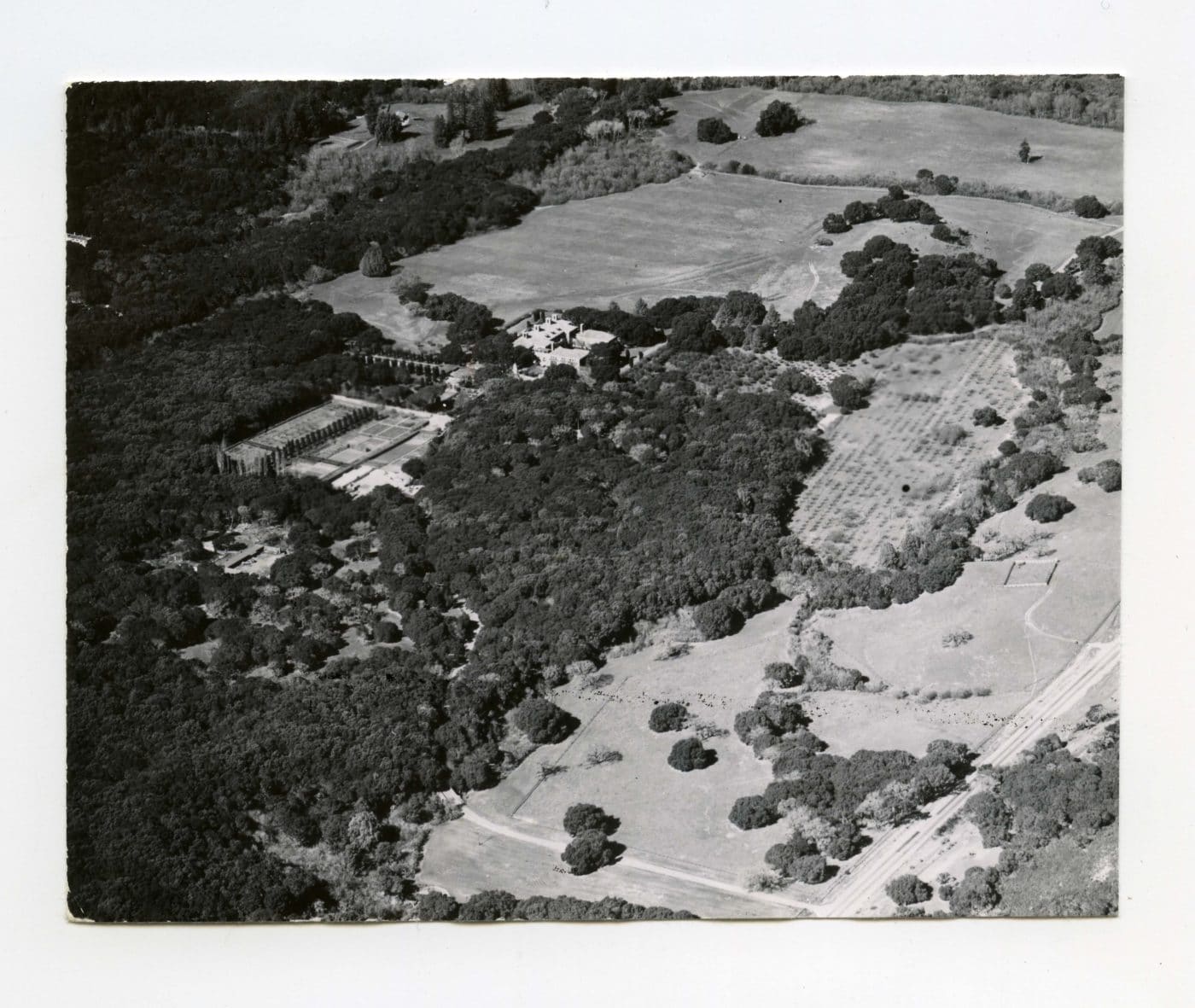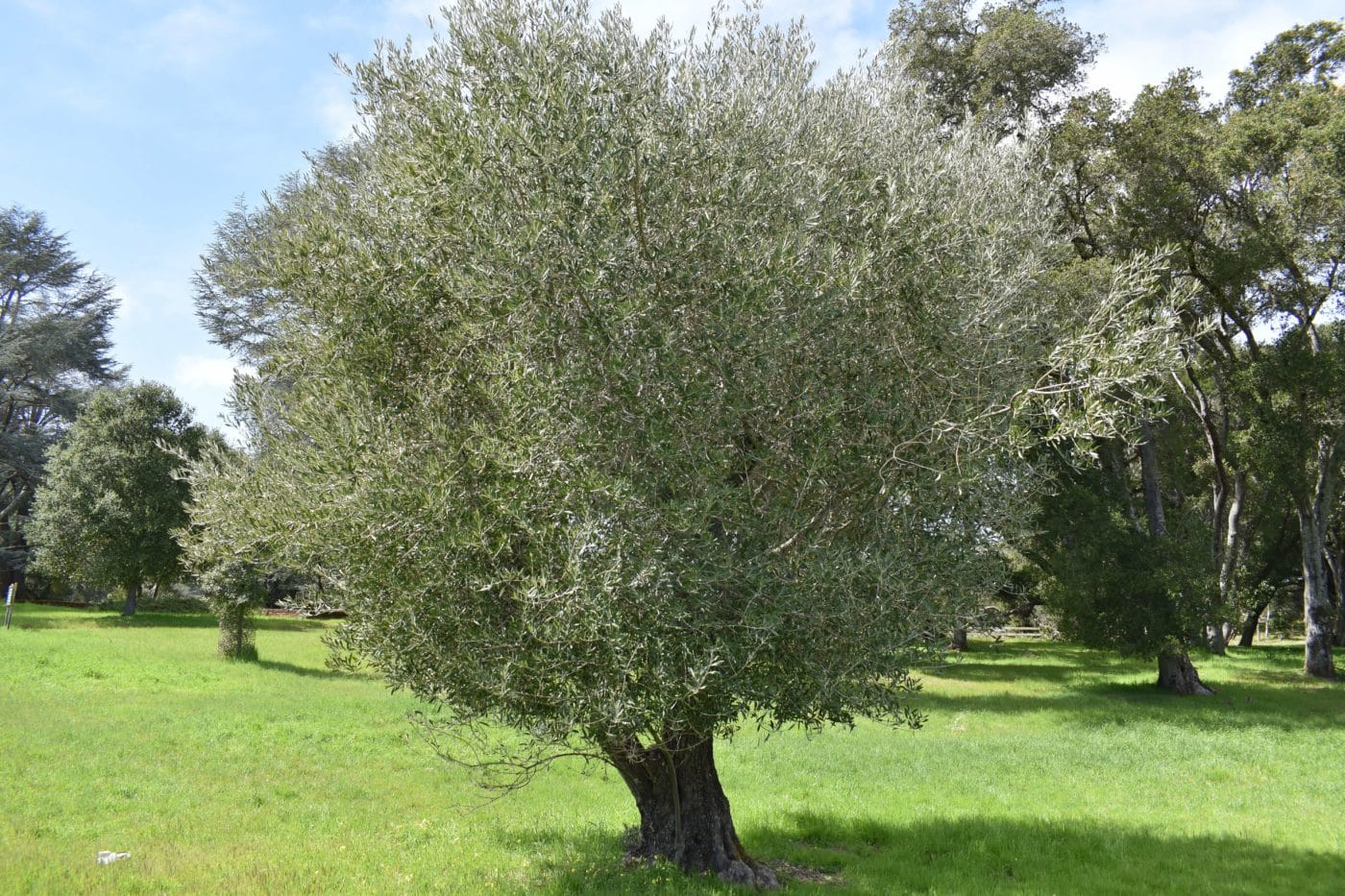From Orchard to Grove and Back: Olive Orchard Restoration

By Haley O’Connor, Formal Garden Manager
Guests who have visited Filoli in the past few weeks have stared in wonder at the renovation to the olive grove in front of the House. We have taken the trees down from a height of 30 feet to just above 8 feet – starting a slow renovation process that will give each tree more sunlight. New branches will emerge where the trunk cuts were made. The trees will develop a full canopy within 5 to 7 years. Our goal is to keep the height of the trees around 16 feet by performing annual light pruning.
Not all the renovated olives will come back, since some were already diseased and may not respond well to heavy pruning. In preparation, we have propagated replacement specimens.
This is the second time such heavy renovations have been made. In the 1980s, the trees were renovated from a height of 25+ feet to 14 feet. Unfortunately, even at that shorter height, branches grew back. It was too difficult, expensive, and time-consuming to maintain a canopy that soon reached over 20 feet. That is one reason we decided to go with the lower height this time.

Interpretive placards explain the project and plan. Puzzled reactions are common, though, from guests greeted by bare trunks where they expected a tranquil olive grove. Let me assure you that the trees are being cared for in a way that will prolong their life and keep the historic orchard healthy for many generations to come.
The front olive orchard was planted around the same time as the Gentleman’s Orchard in 1918 and is an original landscape feature. It extended all the way to the Gentleman’s Orchard until the current parking lot configuration was constructed in 1979, when about half the trees were moved. The olives were planted in front of the House to provide table olives for the Bourns and the sense of entry one would expect arriving to a country place estate.

The olive orchard is one of the most frequently photographed spots on the grounds. On a foggy winter morning or a sun-dappled afternoon, you can easily be transported across the Aegean sea where these trees have been cultivated for thousands of years. As a public space, it has been enjoyed for its tranquil shade and as a wildlife meadow.
Long before I came to Filoli, I spent a season harvesting olives on the island of Crete. The ancient trees clung to hillsides and seemed to grow out of rock. I learned there that olives fruit on second-year wood and will sprout on trunk wood as readily as any other part of the tree. I saw gnarly, half-century-old trunks cut at eye level, thick with young branches weighed down with fruit.
Our Mission olive trees can grow to 35-feet wide, yet were planted on 19-foot centers, meaning they grow into their neighbors. I presume they were planted so with the intention of regular pruning to keep them low and easy to harvest.
In the early 2000s, the olive fruit fly became widespread in California. The fruit fly causes no damage to the tree but ruins the fruit. Since we had not harvested the fruit on any grand scale since Filoli became part of the National Trust, we decided to not spray the trees, and to embrace the fruit fly as food for our bird population. This in turn allowed the orchard to become more of a grove, a wilder place than it was intended to be.
In early March, I met with senior staff to walk the orchard and discuss the health of a group of trees that we had been forced to cut hard last August after a giant oak crashed down on them. As part of the discussion, we looked at a renovated olive that had also had its canopy destroyed by a falling oak. Alex Fernandez, Chief Operations Officer, had renovated the tree over a decade ago. Looking at the new growth on the group of trees closest to the toppled oak from August, we noticed that abundant sun now bathed the trees where they had once been completely shaded from the northwest.
To capture the southern exposure for the rest of the grove, we would need to bring down full rows. This meant there was no graceful or subtle way to begin. Guests would walk by the beloved trees as they entered the grounds. With consideration to wildlife and the visitor experience, we decided to do the renovation over a few years, taking a few rows in the late winter before the nesting season. Wildlife would have canopy coverage, we could preserve some of the shady tranquility, and guests’ views of the parking lot would be hidden throughout the renovation.
Alex showed me the trial tree that had been heavily renovated 10 years ago. The tree was brought down to a height of six feet, leaving an architectural open vase shape with eight main branches and almost no leaves. Over the next five years, as new buds and branches were carefully selected and skillfully trained, a new canopy took shape. The tree looks full, robust, beautiful.

Briefly, I was transported to Crete again. Starting in the early morning, we laid down heavy nets and then beat the branches of the trees to release the fruit. Crawling on hands and knees to puddle the olives in the center where we could pick out thistles and stones and curse the cold of the morning or the heat of midday, it was hard not to think these trees were giving us a little of our own medicine. You want to eat potatoes fried in fresh-pressed olive oil for breakfast? Prepare to work for it. It’s with those potatoes in mind that I begin to work toward the long process of giving light back to each tree in the orchard, retraining a low canopy and giving each tree the attention it needs to thrive for the next 100 years. Though we have no record of olive oil ever being produced at Filoli, a gardener can dream.
Lucca Olives
(Director of Horticulture Jim Salyards’ go-to party appetizer)
2 pint tubs of Trader Joe’s Greek Olive Medley from the deli case (drained and laid out on paper towel for a couple hours to dry somewhat)
20 large garlic cloves, cracked with palm or large knife
10 sprigs thyme (he has also used a combo with rosemary and oregano)
Zest of an orange or tangerine (nice in long, narrow strips)
1/2 cup olive oil
Preheat oven to 400°. In a large fry pan, place garlic cloves and olive oil. Heat on medium-high until garlic begins to brown. Add thyme, and stand back as it will spatter and hiss. Add olives, and toss several times. After 3 minutes, add zest and toss to incorporate. After about a minute, place in preheated oven. Bake about 15 minutes, tossing a couple times, or until olives begin to blister.
Pour into serving dish, but wait about 5 minutes to give olive pits a bit to cool.
P.S. Any favorite combination of olives can also be used. Enjoy!
